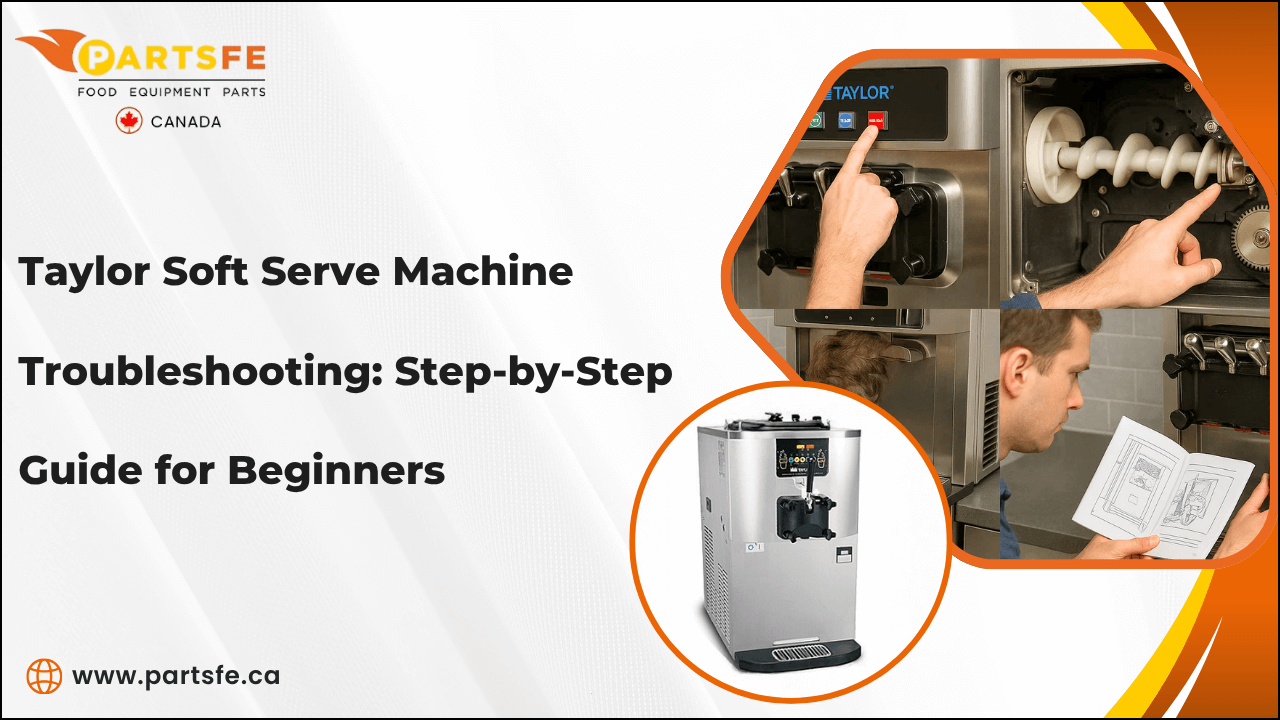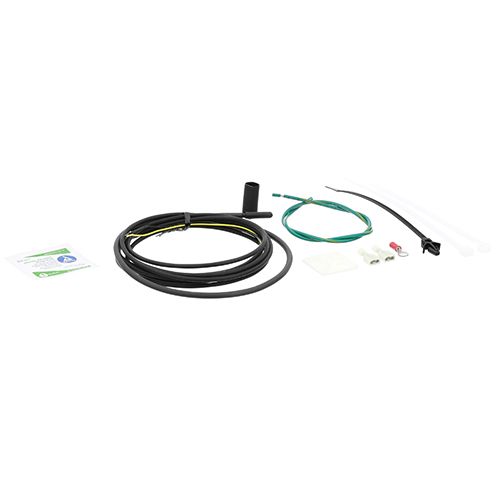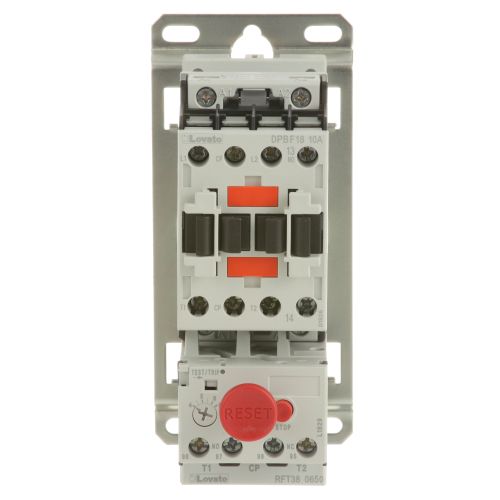Taylor Soft Serve Machine Troubleshooting: Step-by-Step Guide for Beginners
Taylor soft serve machines are known for their reliability, but even the best equipment can run into issues. For beginners, troubleshooting may seem intimidating, especially when the machine won’t freeze, dispenses unevenly, or displays unexpected error messages. Understanding what causes these problems is the first step toward getting your machine back to peak performance.
This step-by-step guide walks you through simple, effective troubleshooting methods designed for new users. You’ll learn how to identify common issues, apply quick fixes, and maintain your machine to prevent future breakdowns. With the right approach, you can reduce downtime, avoid unnecessary service costs, and ensure your Taylor soft serve ice cream machine parts consistently deliver smooth, high-quality results.
Understanding How a Taylor Soft Serve Machine Works
Taylor commercial soft serve ice cream machines are precision-engineered to deliver smooth, creamy soft serve consistently. Understanding how each component works helps beginners troubleshoot common issues, maintain peak performance, and avoid costly repairs in busy commercial kitchens.
Key components and features include:
-
Mix Hopper: Holds and chills the liquid mix. Some models include agitators to prevent separation and maintain consistent flavor.
-
Freezing Cylinder: Freezes and churns the mix. Advanced Taylor machines allow adjustable freezing speeds to control product texture.
-
Dasher Assembly: Rotates to incorporate air (overrun) and prevent ice crystal formation, ensuring smooth, creamy soft serve.
-
Refrigeration System: Includes compressors and evaporators; some models feature dual-circuit systems for faster recovery and energy efficiency.
-
Beater Motor & Gearbox: Powers the dasher; built-in overload protection prevents motor damage.
-
Air/Mix Pumps: Balance air and mix for consistent texture and portion control.
-
Dispensing Head & Valves: Precision valves ensure smooth flow and prevent dripping.
-
Thermostats & Sensors: Monitor temperature, pressure, and product levels; some machines include self-diagnostic alerts.
-
Hopper & Cylinder Heaters: Unique to Taylor, they prevent freezing during idle periods and keep the mix ready for serving.
By understanding these systems, even beginners can spot problems early, maintain consistency, and ensure high-quality soft serve every time.
Looking to upgrade or fix your ice cream soft serve machine? PartsFe CA has you covered with high-quality replacement parts like the mix hopper, freezing cylinder, beater, and dasher assembly from leading brands including Taylor, Allpoints, Hamilton Beach, Franke, and Schaefer, offering fast shipping and reliable support to keep your commercial kitchen running smoothly.
Common Problems with Taylor Soft Serve Machines and What They Mean
In high-use commercial kitchens, Taylor soft serve machines often experience issues rooted in real-world stresses. Below are some documented problems, what’s causing them, and how to fix them.
Problem: Machine Trips Thermal Overload During Freezing
The machine shuts off unexpectedly while serving.
Possible Causes:
-
The worn front bearing is increasing the motor load.
-
Too many appliances on the same circuit or improper wiring.
-
Dirty / obstructed condenser reducing cooling efficiency.
Fix: Replace the bearing, ensure the machine has its own dedicated circuit as per spec, and clean condenser coils regularly.
Problem: Excessive Leakage Into the Rear Drip Pan
Mix leaks into the drip pan during operation.
Possible Causes:
-
Worn or missing drive-shaft seal / O‑ring.
-
Worn rear shell bearing.
-
Incorrect or no lubrication on the drive shaft.
Fix: Replace the shaft seal / O-ring regularly, properly lubricate the drive shaft with food-grade oil, and have a technician replace the rear-shell bearing if it's worn.
Problem: Draw Valve Leaks or Drips
Soft serve drips from the valve even when closed.
Possible Causes:
-
Worn or damaged O-rings on the draw valve.
-
Incorrect or inadequate lubrication.
-
Use of wrong (non-food-grade) lubricant.
Fix: Replace O-rings quarterly, use only Taylor‑approved food-grade lubricant, and ensure the draw valve is lubricated properly.
Problem: Machine Won’t Operate in Auto Mode
The machine fails to enter automatic serving mode.
Possible Causes:
-
The control is set too cold.
-
The beater motor is overloaded, causing a reset.
-
Blown fuse or tripped circuit breaker.
Fix: Raise control temp if needed (with technician), reset the beater motor, and ensure the power circuit is properly rated and working.
Problem: Grainy or Sandy Texture in Soft Serve
Product consistency is rough or icy.
Possible Causes:
-
Viscosity of the mix is off or poor stabilizer/sugar balance.
-
Temperature settings are too low, causing over-freezing / crystal formation.
Fix: Reformulate the mix or consult the mix supplier, and adjust freezing temp; if the issue persists, have a technician check the calibration.
Step-by-Step Taylor Soft Serve Machine Troubleshooting Process
Systematic Taylor soft serve machine troubleshooting ensures minimal downtime and consistent product quality. Follow these clear steps to quickly identify and resolve common issues.
Step 1: Inspect Power Supply
Check that the machine is properly plugged in and the circuit is functioning. Reset breakers or fuses if needed before further testing.
Step 2: Verify Mix Levels
Ensure the hopper has sufficient mix to prevent “starved barrel” issues. Low mix can cause improper freezing and uneven product flow.
Step 3: Examine Temperature Settings
Check both the barrel and hopper temperature controls for correct calibration. Adjust as needed to maintain ideal serving consistency.
Step 4: Check the Draw Valve
Inspect the draw valve for leaks or improper operation. Clean and lubricate O-rings with Taylor-approved food-grade lubricant.
Step 5: Inspect Beater and Cylinder
Look for signs of wear, bent beaters, or scored cylinder walls. Replace or realign components to prevent product damage or motor strain.
Step 6: Clean Condenser and Cooling Components
Remove dust or obstructions from the condenser and cooling coils. Proper airflow ensures efficient freezing and prevents thermal overload trips.
Step 7: Test Thermistors and Sensors
Verify hopper and barrel thermistors for correct readings. Replace faulty sensors to maintain accurate temperatures.
Step 8: Run a Test Cycle
After adjustments, run the machine through a test cycle. Observe consistency, flow, and operation to confirm all issues are resolved.
Check out this guide on how to troubleshoot common issues with Manitowoc ice machines for fast, practical solutions to keep your machine operating smoothly.
How to Fix Taylor Soft Serve Machine Error Codes
Troubleshooting Taylor soft serve machines means reading error codes that signal freezing, dispensing, or motor issues. Fixing them quickly keeps the machine running smoothly and reliably.
E1 / Temperature Sensor Fault
Hopper or barrel temperature readings are incorrect.
Symptoms: Thermistor damaged or misreading, loose wiring, or poor connections.
Fix: Inspect wiring and connectors, replace the thermistor as per Taylor specs, and verify accurate temperature readings.
E2 / Low Mix / Starved Cylinder
Machine output slows or stops.
Symptoms: Low hopper mix, frozen inlet, or misaligned air tube/orifice.
Fix: Fill hopper, clear inlet freeze, and correctly reinstall air tube and orifice.
E3 / Motor Overload / Thermal Trip
The machine shuts down due to motor strain.
Symptoms: Thick mix, worn bearings, excessive beater resistance.
Fix: Check beater rotation, replace worn bearings, and adjust mix consistency.
E4 / Draw Valve / Air System Error
The draw valve operates incorrectly.
Symptoms: Misaligned valve, blocked air orifice, disconnected tubing.
Fix: Reposition valve and tubing, clean air orifice, and lubricate valve.
E5 / Cooling / Overheat Warning
The machine shows overheating.
Symptoms: Dirty condenser, blocked airflow, and compressor issues.
Fix: Clean the condenser, clear the airflow, and call a technician if the compressor is faulty.
E6 / Faceplate Magnetic Switch Fault
The machine won’t reset or operate because the front faceplate isn’t detected.
Symptoms: Faceplate misaligned or magnetic switch not engaged.
Fix: Reattach the faceplate correctly, ensuring proper switch alignment, then reset the machine and test operation.
Pro Tip: Always reset the machine and run a short test cycle after any repair to confirm full functionality before resuming service.
Preventive Maintenance Tips for Trouble-Free Operation
Regular preventive maintenance keeps Taylor soft serve machines running smoothly and ensures consistent product quality. Following the Taylor ice cream machine manual helps perform maintenance correctly and avoid costly downtime.
-
Daily Cleaning: Clean all removable parts daily, including the hopper, freezing cylinder, draw valve, and beater, using warm water and approved cleaning solutions.
-
Sanitization: Sanitize components to maintain proper food safety standards.
-
O-Ring & Seal Inspection: Inspect O-rings and seals regularly for wear or damage and replace them as needed to prevent leaks.
-
Lubrication: Lubricate moving parts, such as the drive shaft and draw valve, with Taylor-approved food-grade lubricant according to manufacturer instructions.
-
Condenser & Vent Maintenance: Check condenser coils and air vents weekly, cleaning off dust or debris to maintain proper airflow and cooling efficiency.
-
Electrical Check: Periodically inspect electrical connections, wiring, and circuit breakers to avoid unexpected shutdowns.
-
Machine Leveling: Rotate or slightly reposition the machine once a month to ensure proper leveling and even load distribution.
-
Beater Blade Inspection: Inspect the beater blades for micro-wear or slight bending that can cause excessive friction and reduce efficiency.
-
Ambient Temperature Control: Keep the ambient kitchen temperature consistent; avoid placing the machine near heat sources or direct sunlight to reduce compressor strain.
-
Water Line Flushing: Flush water lines (if using water-cooled models) periodically to prevent mineral buildup and scale formation inside the condenser.
Check out this guide on how to clean a Scotsman ice machine for quick, step-by-step instructions to keep your unit running efficiently.
Wrapping Up: Keep Your Taylor Soft Serve Machine Running Like New
Proper troubleshooting and regular maintenance are essential to ensure your Taylor soft serve machine operates efficiently and delivers consistent, high-quality soft serve. By understanding common problems, error codes, and preventive care, you can minimize downtime and extend the life of your equipment. Following these steps also helps reduce repair costs and keeps your commercial kitchen running smoothly.
Key Takeaways:
-
Train staff to recognize early signs of mechanical strain or unusual noises.
-
Keep spare O-rings, seals, and bearings on hand for quick replacements.
-
Log machine performance and issues to track recurring problems.
-
Avoid abrupt power-offs to protect motors and electronics.
-
Ensure proper ambient kitchen conditions—extreme heat or humidity can affect machine performance.
By implementing these tips along with standard maintenance, your Taylor soft serve machine can remain reliable and efficient. Documenting issues, preparing spare parts, and maintaining optimal kitchen conditions ensure smoother operation and longer equipment life.
FAQs
Why is my Taylor ice cream machine not working?
The machine may not be receiving power, or a fuse/circuit breaker may have tripped. Check the power supply, reset breakers, and inspect for any mechanical or electrical faults.
Why does my Taylor ice cream machine keep freezing up?
Freezing issues can occur due to low mix levels, incorrect temperature settings, or clogged inlets. Ensure proper mix quantity, adjust barrel/hopper temperatures, and clear any obstructions.
How do you reset a Taylor ice cream machine?
Turn the machine off and unplug it for a few minutes. Reattach all components properly, plug it back in, and power it on to reset the system.
How much is a Taylor soft serve ice cream machine?
A Taylor soft serve ice cream machine typically costs between $4,000 to $12,000, depending on the model and features. Prices may vary based on new or used units and additional commercial kitchen requirements.











